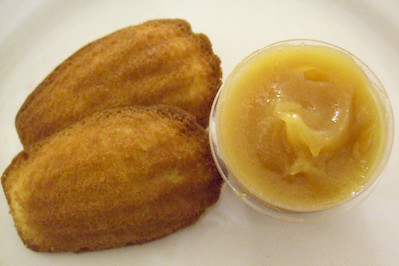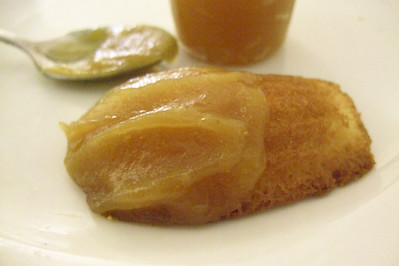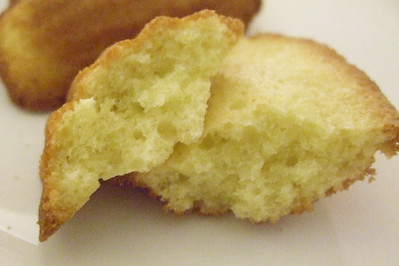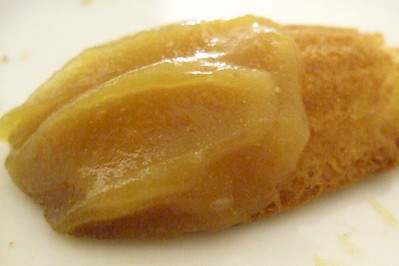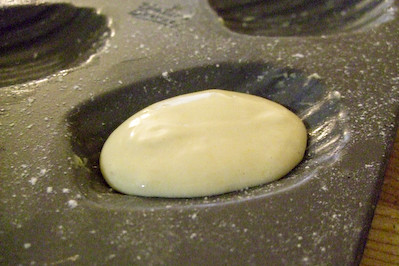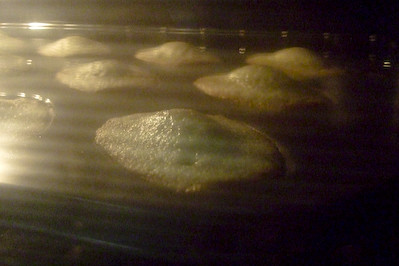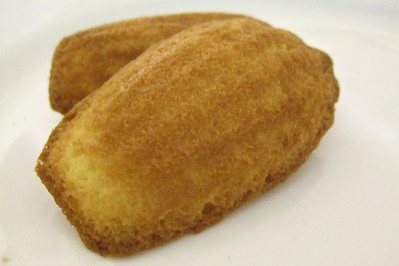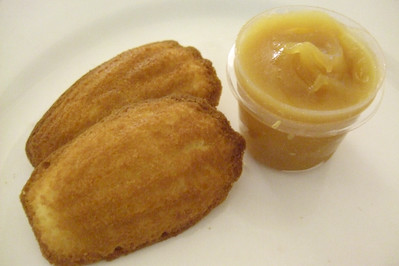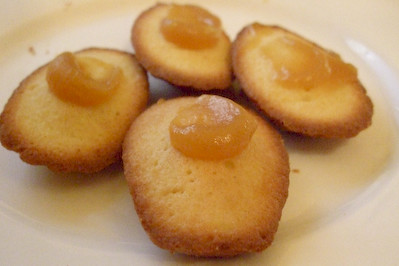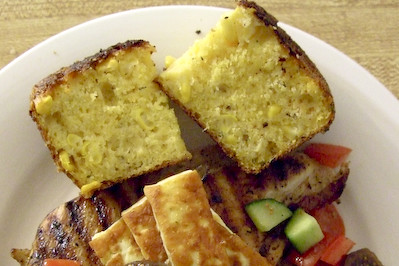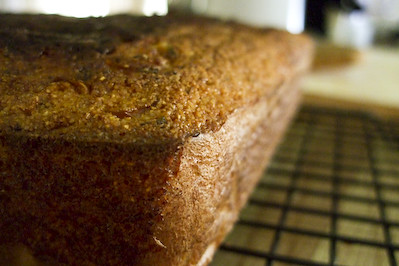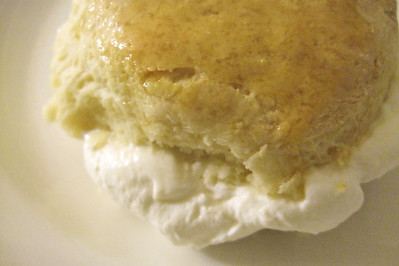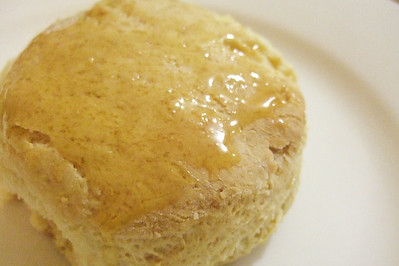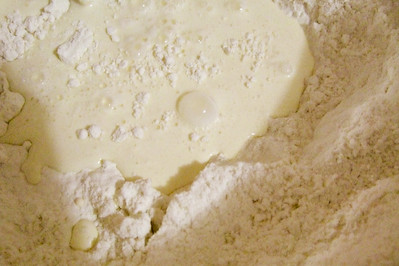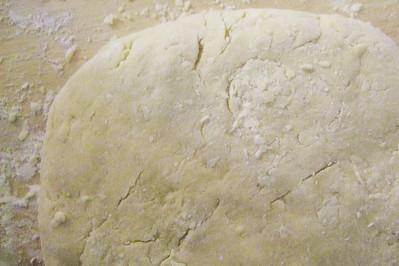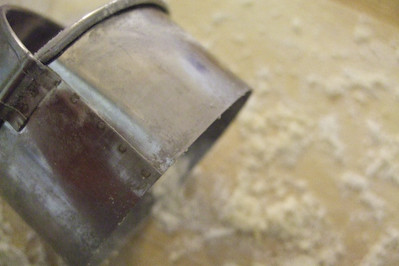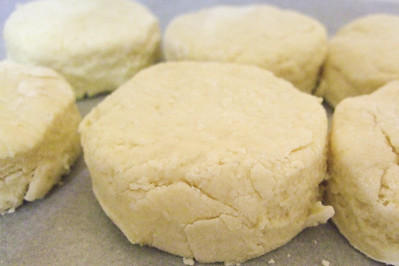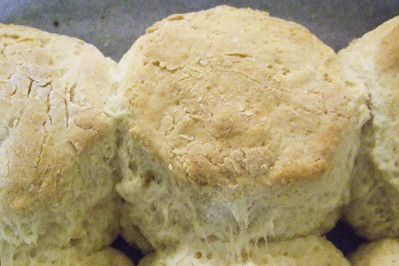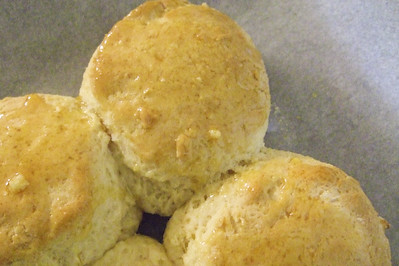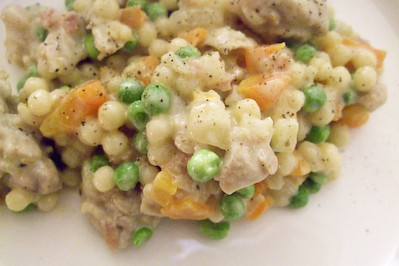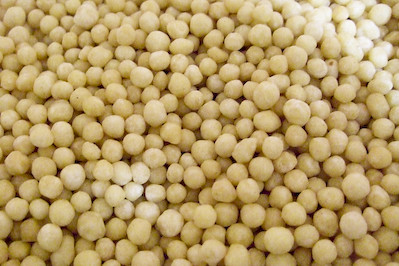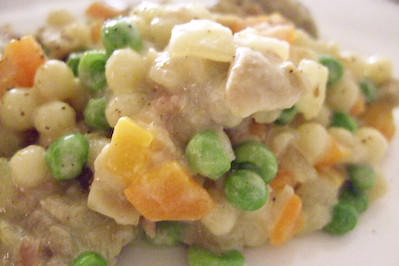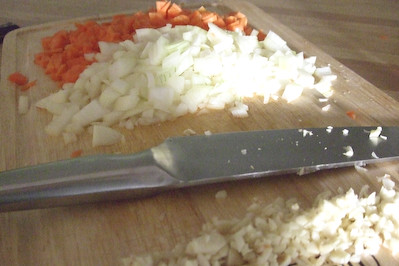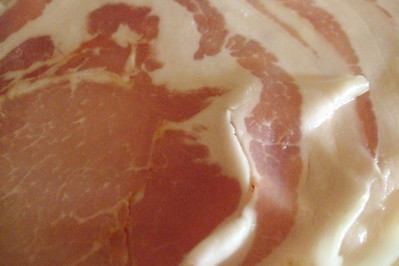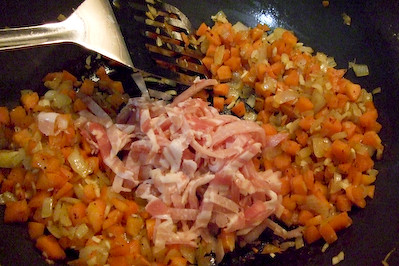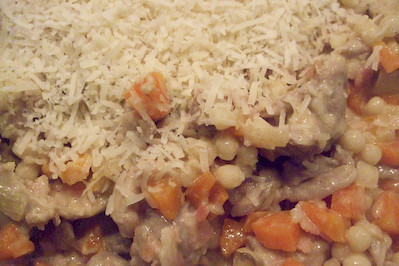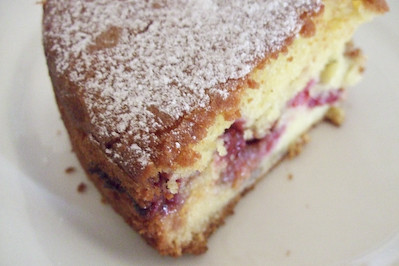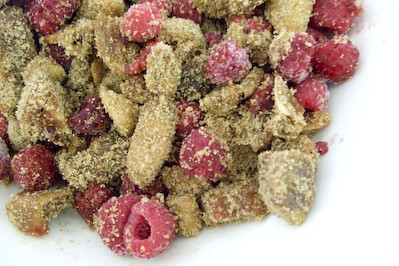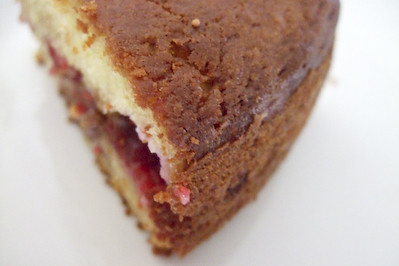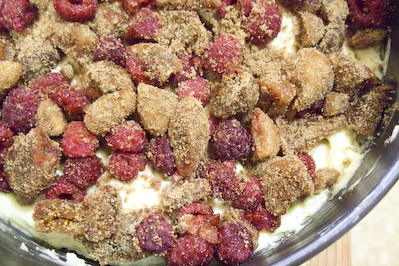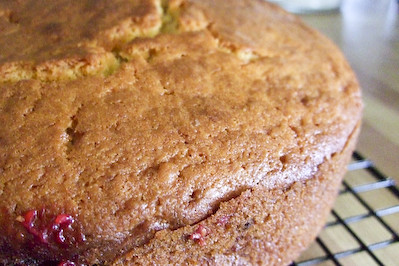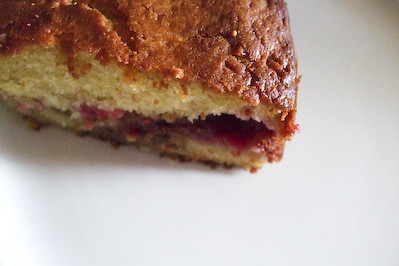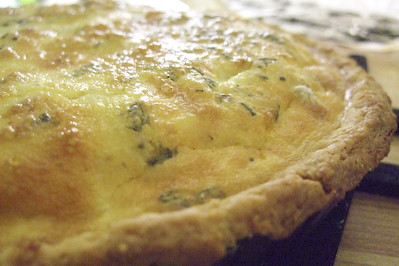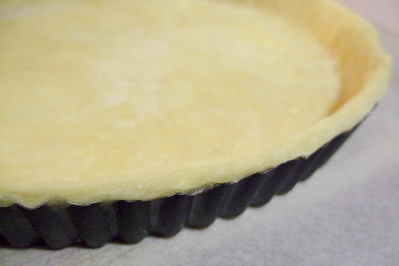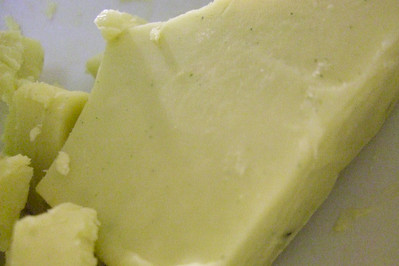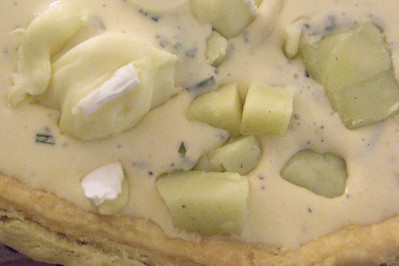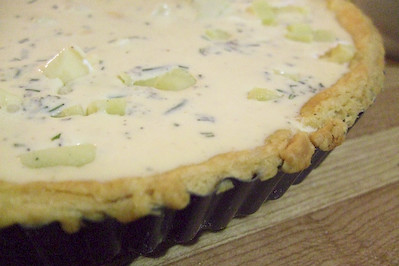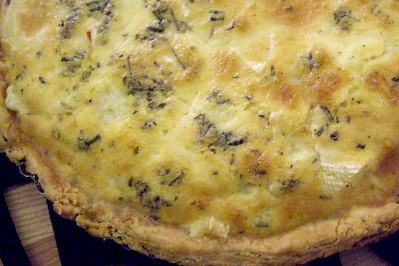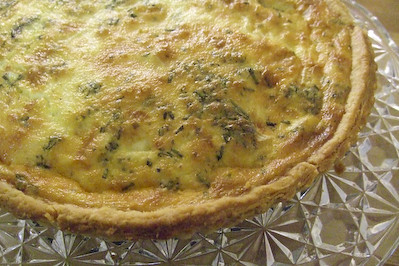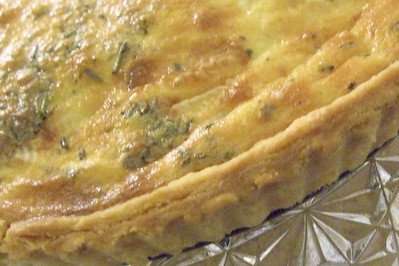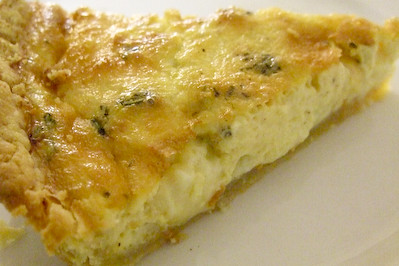Happy Merdeka Day everyone! Today is Malaysia's national day, so it only seemed right to include a post on my blog which is tinged with the flavours of the country. I lived in Malaysia for 5 years and my parents still live there, and although I was a fussy eater while growing up there, I now miss and crave the amazing food there. One of the things that I miss the most is the abundance of pandan flavoured goodies there, including my favourite spread; kaya, made with coconut, eggs and pandan extract. So the other day I decided to whip up a batch of madeleines, these sweet little sponge cakes, which were flavoured with pandan essence that I picked up at the Asian supermarket and I served them with some kaya. Unfortunately I haven't had the time to make my kaya from scratch yet, I swear I will soon though!
You can find a lot of pandan flavoured sponge cakes in Asian supermarkets here in Sydney, easily spotted due to their neon green appearance, but good kaya is a little hard to come by. There is one quite common brand called Nonya brand which is sold in a glass jar which my brother swears he has seen them using in Mamak for their roti kaya (I'm not sure how much I believe this), but my favourite one so far is a canned version I found in Cabramatta which is Yeo's brand and is by far the smoothest, eggiest, coconutiest(?!) version I've found off the shelf. I was a little disappointed with the pandan flavouring I bought, it was very weak and watery and not green enough! Definitely getting a much stronger paste version next time.
I believe the madeleine recipe is one that my brother found which is very old and works a charm. We fell in love with these little sponge cakes after coming across this recipe while having cake cravings and at the time we just threw the batter into a patty cake tin and it still tasted amazing. It's by far the most reliable madeleine recipe I've come across, other ones I have tried can be too dry and dense. In fact I'd tried so many bad madeleine recipes that I gave up for a while and my almost new madeleine tin gathered dust at the back of my cupboard until I decided to switch back to this great recipe. I was delighted that this mixture did develop a small bump on the tops, something which I have never managed to get with other recipes. It may have been small but there was definitely a bump!
The only thing you have to take care of with this recipe is to not heat up the mixture too much, or you will cook the egg in the batter enough to make the whole mixture taste and smell very eggy. But done right, these madeleines are super light, fluffy and moist with a lovely golden layer on the outside that is fantastic to sink your teeth into. And serving it with kaya enhances the great pandan flavours and had me very pleased with the combination.
Pandan Madeleines
(makes about 24 madeleines)
2 eggs
3/4 cup caster sugar
1 cup plain flour, sifted
150g butter melted
Pandan flavouring (essence or paste)
Preheat oven to 180 degrees C. Grease madeleine tin very well, then dust lightly with flour. This will make it easier to remove the madeleines later (I think I can thank Rick Stein for that tip).
Fill a wide, low tin with hot water, large enough that you can place your mixing bowl inside it and the water level goes up the sides of the mixing bowl by 2cm. Combine eggs and sugar in the mixing bowl and beat with an electric mixer until the mixture is very light and fluffy and has tripled in volume. (If the water starts to get cool, you can top it up with a bit more hot water, just take care that its not hot enough to scramble the eggs, you'll know if this starts to happen because the mixture will start to smell very eggy)
Add pandan flavouring to taste. Since mine was the weak watery kind, I used almost a tablespoon and it was still quite subtle. If you are using the paste you will need a lot less. Add sifted flour and carefully fold into mixture. Finally, stir in the melted butter until just combined.
Carefully spoon mixture into the moulds filling them about 3/4 full (a bit less than a tablespoon). Bake for 10 minutes or until the tops of the cakes are just turning golden. Immediately and carefully remove the madeleines from the tin and cool on a wire rack.
Can be served on their own dusted lightly with icing sugar or with kaya. I swear I will do a recipe for homemade kaya soon! Best eaten straight out of the oven, but if you really want you can cool them completely and then place in a very airtight container for the next day.
The only thing I wish I could have improved was the colour of the madeleines, they really should be much greener from the pandan flavouring, so don't be alarmed if yours turn out greener if you use a better pandan flavouring than I did. The flavour was lovely though, pandan always works well in a light sponge cake (I was originally going to do a typical pandan chiffon cake but didn't have time to find a good recipe since my mum had lost hers :( ), so it was just perfect for the madeleines. I'm not sure why but the heat from the hot water really helps create the perfect texture and flavour in the cakes.
You can find a lot of pandan flavoured sponge cakes in Asian supermarkets here in Sydney, easily spotted due to their neon green appearance, but good kaya is a little hard to come by. There is one quite common brand called Nonya brand which is sold in a glass jar which my brother swears he has seen them using in Mamak for their roti kaya (I'm not sure how much I believe this), but my favourite one so far is a canned version I found in Cabramatta which is Yeo's brand and is by far the smoothest, eggiest, coconutiest(?!) version I've found off the shelf. I was a little disappointed with the pandan flavouring I bought, it was very weak and watery and not green enough! Definitely getting a much stronger paste version next time.
I believe the madeleine recipe is one that my brother found which is very old and works a charm. We fell in love with these little sponge cakes after coming across this recipe while having cake cravings and at the time we just threw the batter into a patty cake tin and it still tasted amazing. It's by far the most reliable madeleine recipe I've come across, other ones I have tried can be too dry and dense. In fact I'd tried so many bad madeleine recipes that I gave up for a while and my almost new madeleine tin gathered dust at the back of my cupboard until I decided to switch back to this great recipe. I was delighted that this mixture did develop a small bump on the tops, something which I have never managed to get with other recipes. It may have been small but there was definitely a bump!
The only thing you have to take care of with this recipe is to not heat up the mixture too much, or you will cook the egg in the batter enough to make the whole mixture taste and smell very eggy. But done right, these madeleines are super light, fluffy and moist with a lovely golden layer on the outside that is fantastic to sink your teeth into. And serving it with kaya enhances the great pandan flavours and had me very pleased with the combination.
Pandan Madeleines
(makes about 24 madeleines)
2 eggs
3/4 cup caster sugar
1 cup plain flour, sifted
150g butter melted
Pandan flavouring (essence or paste)
Preheat oven to 180 degrees C. Grease madeleine tin very well, then dust lightly with flour. This will make it easier to remove the madeleines later (I think I can thank Rick Stein for that tip).
Fill a wide, low tin with hot water, large enough that you can place your mixing bowl inside it and the water level goes up the sides of the mixing bowl by 2cm. Combine eggs and sugar in the mixing bowl and beat with an electric mixer until the mixture is very light and fluffy and has tripled in volume. (If the water starts to get cool, you can top it up with a bit more hot water, just take care that its not hot enough to scramble the eggs, you'll know if this starts to happen because the mixture will start to smell very eggy)
Add pandan flavouring to taste. Since mine was the weak watery kind, I used almost a tablespoon and it was still quite subtle. If you are using the paste you will need a lot less. Add sifted flour and carefully fold into mixture. Finally, stir in the melted butter until just combined.
Carefully spoon mixture into the moulds filling them about 3/4 full (a bit less than a tablespoon). Bake for 10 minutes or until the tops of the cakes are just turning golden. Immediately and carefully remove the madeleines from the tin and cool on a wire rack.
Can be served on their own dusted lightly with icing sugar or with kaya. I swear I will do a recipe for homemade kaya soon! Best eaten straight out of the oven, but if you really want you can cool them completely and then place in a very airtight container for the next day.
The only thing I wish I could have improved was the colour of the madeleines, they really should be much greener from the pandan flavouring, so don't be alarmed if yours turn out greener if you use a better pandan flavouring than I did. The flavour was lovely though, pandan always works well in a light sponge cake (I was originally going to do a typical pandan chiffon cake but didn't have time to find a good recipe since my mum had lost hers :( ), so it was just perfect for the madeleines. I'm not sure why but the heat from the hot water really helps create the perfect texture and flavour in the cakes.
Happy Merdeka Day!

